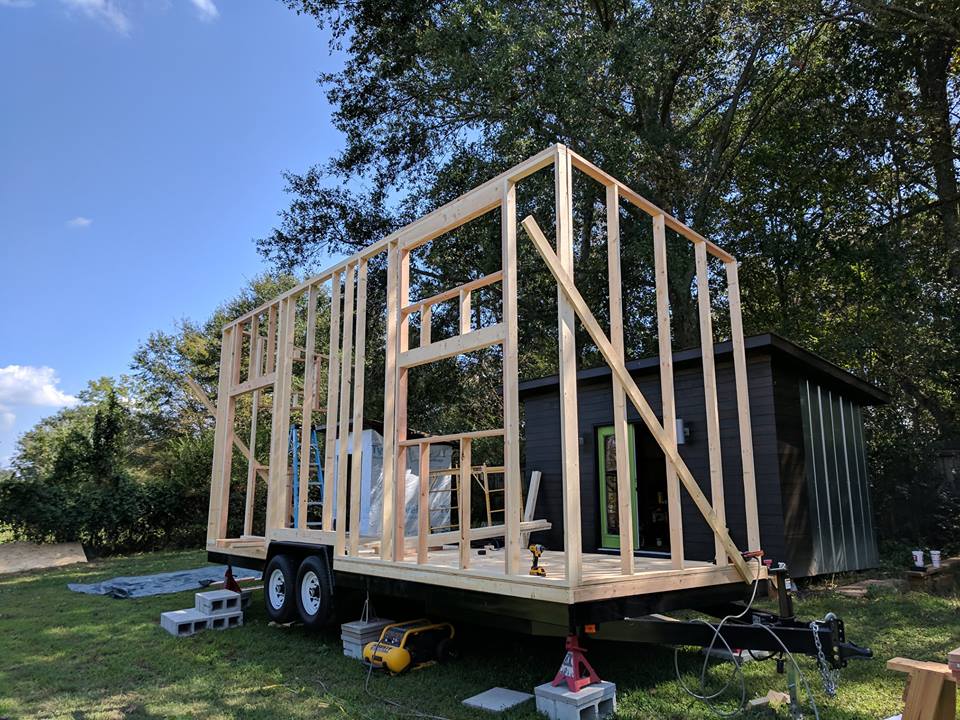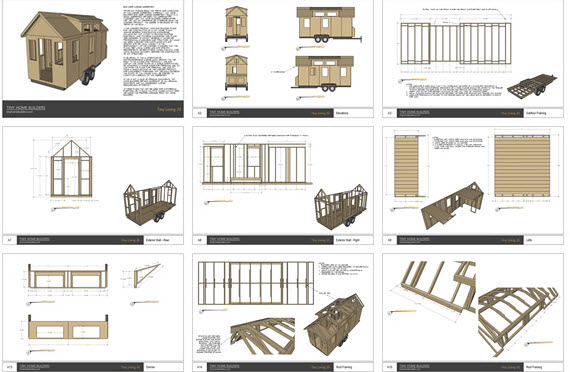Let’s be honest here: we are all human and we all make mistakes. And knowing that, you can prepare yourself for some of them, and there are others that you are just going to have to learn as you go. As experienced builders, let us give you a little advise so you can prevent a few of the biggest mistakes from happening. Here are the five biggest tiny house mistakes that you may encounter while building.
Headers

Window and doors put a definite gap in your support structure. You are basically taking a perfectly good wall and putting a huge hole in it. So you have to find a way to distribute the weight around it. That is where headers come in. One of the biggest things people forget is to put in a header. Dan covers headers in his book, The Tiny House Design and Construction Guide.
Going Cheap

I know. I hear you. The tiny house movement was built on being affordable and doings things as thriftily as you could. But there are some places you just shouldn’t skimp. For instance, if you use OSB instead of plywood, you will save some money, but you are going to be sacrificing in other ways, such as water resistance. More to come on this as Dan is currently working on a 30 day experiment to help demonstrate this exact thing. Also, you need to be EXTREMELY careful when repurposing an old trailer, especially an RV trailer. Most of these trailers are not meant to handle the weight of a tiny house. And that can be a real problem once you are built out.
Trailer Width
This is probably our most heard request: "I want to have a trailer at the maximum legal road limits of 102”. There is a reason that our standard trailers are at the 90” width. This is to allow you to fit everything inside that max width of 102”. If you build your walls all the way out on the end of the 102” trailer, you are going to go WAY over the limit. You have to account for sheathing (1/2”), outside siding (1/2”), window and door trim (1/2”), drip edge (1/2”) and your roof overhang (at least 3”). Now times that all by two to account for each side. Certainly if you are doing a shed style roof and thin metal siding, you can get away with a little bit less than those measurements, but you will still go over if you are starting with a 102” trailer.
Using Heavy Materials
I know that Dan constantly preaches that we use regular construction for our tiny homes just like you would find in large homes, but comes with a couple of caveats. For instance, you do not want to use some materials like sheetrock or a large amount of tile in your home because of the weight. (Take it from me – the guy who moved 1200 lbs. of tile yesterday!) That doesn’t mean you can’t use some of these materials, but just be on the sparing side. There are beautiful materials that mock granite, hardwood and tile and are a tenth the weight. Also, stay away from tar roof shingles. They are really heavy to work with, too.
Poor Planning

We hammer this point home a lot in our articles, but it is very true: Proper Planning Prevents Poor Performance. Whether you buy plans or draw them up yourself, know what you are going for. If you have a plan ahead of time, you can purchase all of your materials together and get discounts along the way. Also, building a tiny house is a huge time sink. You will figure on working an eight hour day for framing, but after three runs to Home Depot and forgetting two missed steps, you are actually only half done after 10 hours. Be prepared! Wasn’t that the scouts marching creed? What tiny house mistakes have you come up against while building? How did you conquer them? Let us know in the comments below.